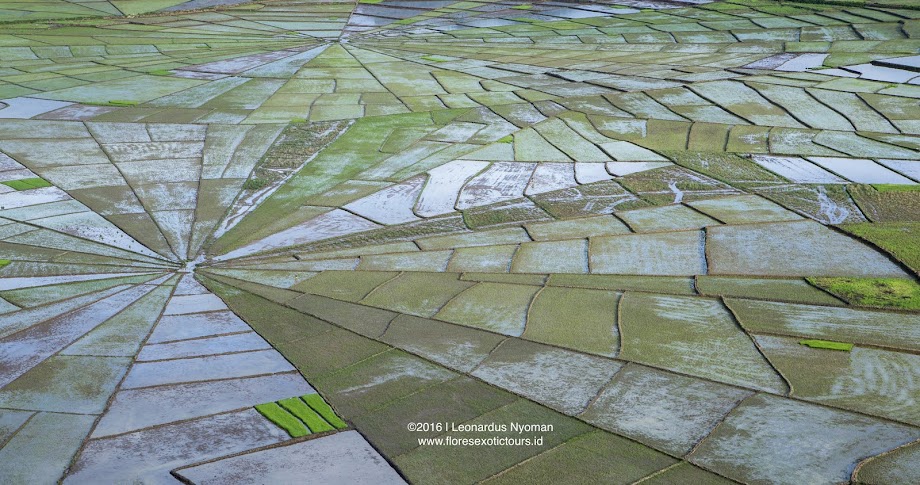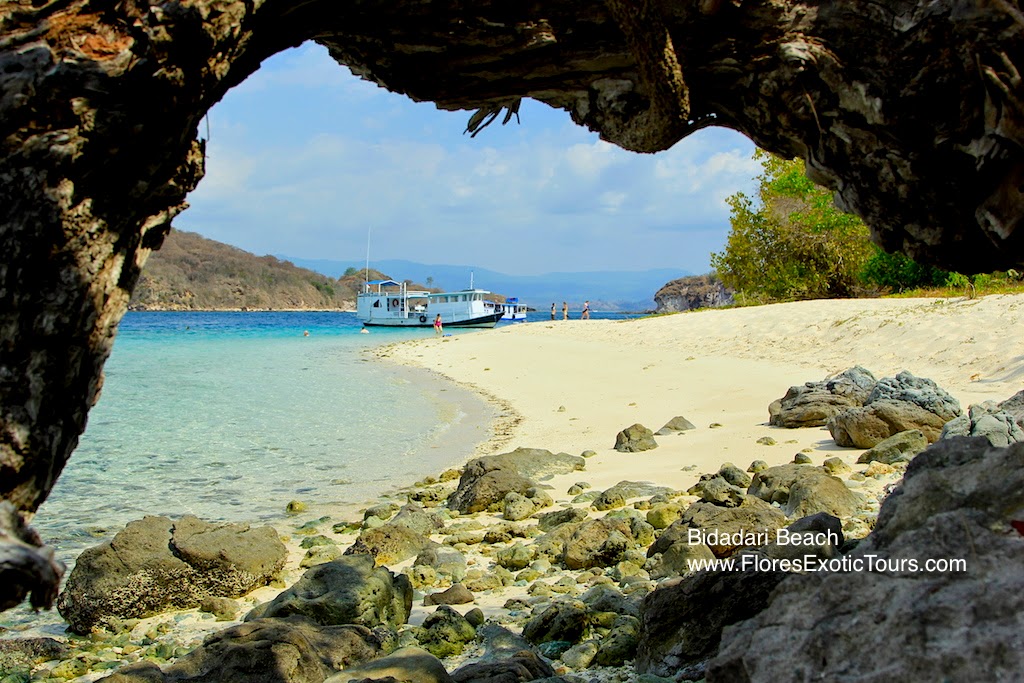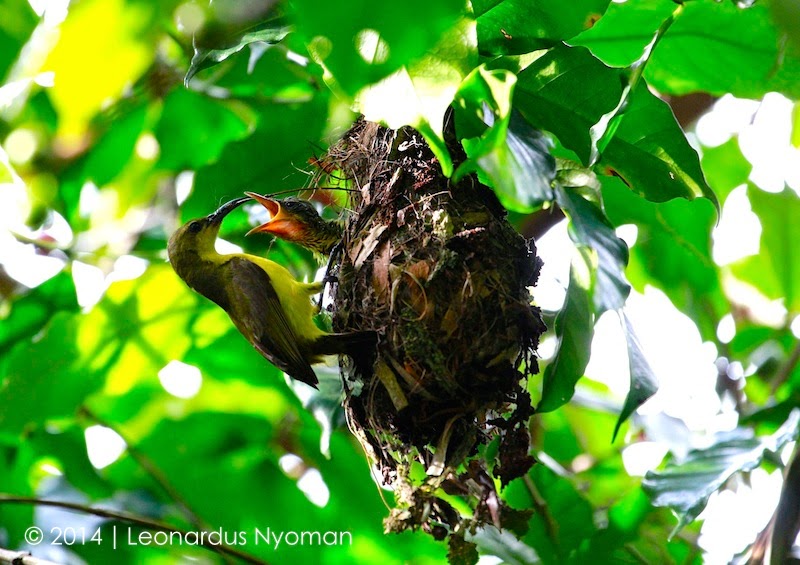Saturday, December 20, 2014
Tuesday, October 21, 2014
Perkampungan Adat dan Benteng None - So'e - TTS - NTT
Perkampungan
Adat dan Benteng None
Salah
satu daya tarik adalah perkampungan adat masyarakat adat None, yang dihuni oleh
marga Tauho. Di tempat ini anda bisa menyaksikan Rumah-rumah adat orang Timor
berupa Ume Kbubu (Rumah Bulat) dan Lopo.
Dalam
filosofi orang Timor, Rumah Adat Ume Kbubu melambangkan wanita orang Timor yang
santun, bersahaja, merenda dan tertutup auratnya sebagaimana dilambangkan oleh
ume kbubu, dimana atapnya dari bubungan sampai ke tanah, dan memiliki satu
pintu saja, sehingga orang keluar masuk harus menunduk. Sementara Lopo, bagi
orang Timor melambangkan laki-laki, dimana agak terbuka, kokoh, dan sebagai
tempat untuk pertemuan keluarga, dimana selalu dipimpin oleh bapak selaku
kepala keluarga.
Terdapat
Benteng Pertahanan Masyarakat Adat None pada jaman dahulu melawan musuh dan
penjajah. Benteng tersebut terbuat dari batu-batu alam dan sejenis tanaman
berduri (Naus) yang ditanam berjejer sepanjang 1 km, sementara pada sisi yang
lain, terdapat jurang yang sangat terjal sehingga musuh sangat sulit sampai ke
perkampungan mereka.
Tarian
Perang (Ma'ekat)
Dalam tarian ini disuguhkan ketangkasan, kepiawaian, keberanian dan keheroikan para panglima dan prajurit perang (meo) dalam memerangi musuh di medan laga, yang kemudian memenangkan pertempuran dan melanjutkannya dengan pesta pora kemenangan lewat Tarian Bonet. Sejenis tarian gembira yang mengambil formasi bulatan sambil bergerak seiring jarum jam dengan panduan lantunan syair-syair pantun yang disebut ”Tne”.
Dalam tarian ini disuguhkan ketangkasan, kepiawaian, keberanian dan keheroikan para panglima dan prajurit perang (meo) dalam memerangi musuh di medan laga, yang kemudian memenangkan pertempuran dan melanjutkannya dengan pesta pora kemenangan lewat Tarian Bonet. Sejenis tarian gembira yang mengambil formasi bulatan sambil bergerak seiring jarum jam dengan panduan lantunan syair-syair pantun yang disebut ”Tne”.
Upacara
Adat Poit Pah
Upacara adat syukuran panen ini, biasanya dilakukan oleh orang Timor dalam memasuki musim panen, bersyukur kepada Allah sang pemberi rejeki atas hasil panenan yang melimpah sembari memohon berkat atas tanaman untuk musim tanam mendatang. Prosesi upacara adat ini, diawali dengan doa yang dilakukan oleh tetuah yang telah ditunjuk (Ana,am Nes).Korban-korban berupa ternak sapi dan babi serta hulu hasil yang telah disiapkan didoakan dan kemudian dipersembahkan pada mesbah yang ada di bawah sebatang pohon beringin besar. Darah sembelihan kemudian diperciki pada hulu hasil yang ada.
Upacara adat syukuran panen ini, biasanya dilakukan oleh orang Timor dalam memasuki musim panen, bersyukur kepada Allah sang pemberi rejeki atas hasil panenan yang melimpah sembari memohon berkat atas tanaman untuk musim tanam mendatang. Prosesi upacara adat ini, diawali dengan doa yang dilakukan oleh tetuah yang telah ditunjuk (Ana,am Nes).Korban-korban berupa ternak sapi dan babi serta hulu hasil yang telah disiapkan didoakan dan kemudian dipersembahkan pada mesbah yang ada di bawah sebatang pohon beringin besar. Darah sembelihan kemudian diperciki pada hulu hasil yang ada.
Upacara
Adat Ote Naus
Upacara adat yang satu ini biasa dilakukan oleh masyarakat adat Timor untuk mendeteksi lawan / musuh sebelum melakukan perlawanan. Sarana yang digunakan adalah sebilah tombak yang diarahkan ke tiang pancongan kemudian mendepa dan apabila depaan tangan mencapai tiang pancongan, maka itu menandakan ada keberuntungan, dan sebaliknya manakala tangan tidak mencapai tiang pancongan, menandakan ketidakberuntungan, dan itu berarti masih ada sejumlah kendala yang perlu dibenahi dengan cara naketi.
Upacara adat yang satu ini biasa dilakukan oleh masyarakat adat Timor untuk mendeteksi lawan / musuh sebelum melakukan perlawanan. Sarana yang digunakan adalah sebilah tombak yang diarahkan ke tiang pancongan kemudian mendepa dan apabila depaan tangan mencapai tiang pancongan, maka itu menandakan ada keberuntungan, dan sebaliknya manakala tangan tidak mencapai tiang pancongan, menandakan ketidakberuntungan, dan itu berarti masih ada sejumlah kendala yang perlu dibenahi dengan cara naketi.
Photography: Leonardus Nyoman
Monday, October 13, 2014
Pulau Bidadari
Pulau Bidadari
Pulau Bidadari, which means ‘angel island’ in Indonesian, is a small, charming island located northwest of Labuan Bajo. This island is a water lover’s paradise. Its excellent white-sand beaches seem to have come from paradise, and its crystal clear and calm waters make it an ideal spot for swimming, snorkeling, and especially learning how to dive. Bidadari Island, reachable by way of a short 15–20 minute boat trip, is a tiny island. Its 14–15 hectares are covered with hills and trees, and it is almost completely surrounded by beautiful beaches.
Text : www.florestourism.com
Photography: Leonardus Nyoman (www.floresexotictours.com)
Pulau Bidadari, which means ‘angel island’ in Indonesian, is a small, charming island located northwest of Labuan Bajo. This island is a water lover’s paradise. Its excellent white-sand beaches seem to have come from paradise, and its crystal clear and calm waters make it an ideal spot for swimming, snorkeling, and especially learning how to dive. Bidadari Island, reachable by way of a short 15–20 minute boat trip, is a tiny island. Its 14–15 hectares are covered with hills and trees, and it is almost completely surrounded by beautiful beaches.
Text : www.florestourism.com
Photography: Leonardus Nyoman (www.floresexotictours.com)
Sunday, June 8, 2014
Pulau Mules & Pasir Putih - Dintor - Satarmese - Manggarai - Flores island
Pulau Mules – Satarmese barat – Manggarai – Flores
Pulau Mules yang juga disebut dengan nuca molas dalam bahasa
manggarai terletak di pantai selatan kabupaten Manggarai Flores Nusa
Tenggara timur, secara administratif pulau ini termasuk di wilayah
kecamatan satarmese barat, kabupaten Manggarai.
Untuk mencapai pulau ini, anda dapat menggunakan kendaraan dari
Ruteng, ibukota kabupaten Manggarai menuju ke Dintor dengan lama
perjalanan sekitar 2.5 jam, dari Dintor anda menggunakan perahu motor
selama 15-20 menit.
Pulau dengan pasir putih dan hamparan bukit batu di bagian barat
sangat indah dan kegiatan wisata seperti snorkeling, berenang atau
bersantai di pantai dapat anda lakukan disini.
Saturday, May 10, 2014
Exotic birds -Yellow-bellied Sunbird, Cinnyris jugularis
The Olive-backed Sunbird, Cinnyris
jugularis, also known as Yellow-bellied Sunbird and formerly Nectarinia
jugularis, is an Asian sunbird.
Diet / Feeding
The sunbirds are a group of very small
Old World passerine birds which feed largely on nectar, although they
will also take insects, especially when feeding young. Their flight is fast and
direct on their short wings.
Range / Distribution
The Olive-backed Sunbird is common
across southern China to the Philippines and
Malaysia down to northeast Australia.
Originally from mangrove habitat, the
Olive-backed sunbird has adapted well to humans, and is now common even in
fairly densely populated areas, even forming their nests in human dwellings.
Description
They are small songbirds, at most 12cm
long. The underparts of both male and female are bright yellow, the backs are a
dull brown colour. The forehead,
throat and upper breast of the adult male is a dark, metallic blue-black.
Breeding / Nesting
The birds mate between the months of
April and August. Both the male and the female assist in building the nest
which is flask-shaped, with an overhanging porch at the entrance, and a trail
of hanging material at the bottom end.
After building the nest, the birds
abandon the nest for about a week before the female returns to lay one or two
greenish-blue eggs. The eggs take a further week to hatch. The female may leave
the nest for short periods during the day during incubation.
After the chicks have hatched, both male
and female assist in the care of the young, which leave the nest about two or
three weeks later
Photography by Leonardus Nyoman
www.FloresExoticTours.com.
Saturday, April 12, 2014
Islands around Labuanbajo - Flores - Indonesia
Pulau Bidadari, which means ‘angel
island’ in Indonesian, is a small, charming island located northwest of
Labuan Bajo. This island is a water lover’s paradise. Its excellent
white-sand beaches seem to have come from paradise, and its crystal
clear and calm waters make it an ideal spot for swimming, snorkeling,
and especially learning how to dive. Bidadari Island, reachable by way
of a short 15–20 minute boat trip, is a tiny island. Its 14–15 hectares
are covered with hills and trees, and it is almost completely surrounded
by beautiful beaches.
Seraya Kecil island
Only 10km from Labuan Bajo lies the small but charming Seraya Island (official name: Seraya Kecil) – a place where chilling out on white sandy beaches, swimming in the clear, calm and turquoise water or exploring the colorful underwater world with just some goggles and a snorkel make up your daily routine. Around the small fishing village that is located on the southern tip of the island, you can get an impression of the bagan style of traditional fishing with its bamboo structures erected over the open sea.
Kanawa island
Kanawa Island, located approximately 15 kilometers from Labuan Bajo at the border of Komodo National Park, is considered to be one of Southeast Asia’s most idyllic islands, fully surrounded by a spectacular reef with thousands of fish species, turtles, corals, reef sharks, and mantas. A small hill in the middle of this untouched island guarantees a spectacular view over the national park and to Labuan Bajo Bay. From here, you can enjoy the most breathtaking sunrises and sunsets.
Facilities
On all of these small islands, you will find accommodation in the
form of basic bungalows which are located almost directly on the beach.
There are also a number of small restaurants.
However, equipment for snorkeling cannot be rented on every island. On Bidadari you should have your own snorkeling gear which can be obtained from a dive rental place in Labuan Bajo; whereas on Kanawa and Seraya you can rent the equipment directly on the islands.
If you’re up for diving, you should check before departing whether either renting the equipment is possible on the island or whether you should first arrange it from Labuan Bajo.
Bidadari Island is managed by Reefseekers for dive resorts; however for diving activities with them, you need to make an arrangement in their Labuan Bajo office, not on the island. Kanawa island is developed by an Italian company, where diving is possible without any arrangements in Labuan Bajo.
There are further more stunning islets around Labuan Bajo, as such as Kalong and Monkey islands, easily reachable and both offer good opportunities to explore Flores’ exotic fauna. As there is no accommodation on these islands yet, visits are limited to day trips. However, the islands are so close to Rinca and Komodo islands that some local tour operators offer overnight stays in villages on both islands.
However, equipment for snorkeling cannot be rented on every island. On Bidadari you should have your own snorkeling gear which can be obtained from a dive rental place in Labuan Bajo; whereas on Kanawa and Seraya you can rent the equipment directly on the islands.
If you’re up for diving, you should check before departing whether either renting the equipment is possible on the island or whether you should first arrange it from Labuan Bajo.
Bidadari Island is managed by Reefseekers for dive resorts; however for diving activities with them, you need to make an arrangement in their Labuan Bajo office, not on the island. Kanawa island is developed by an Italian company, where diving is possible without any arrangements in Labuan Bajo.
There are further more stunning islets around Labuan Bajo, as such as Kalong and Monkey islands, easily reachable and both offer good opportunities to explore Flores’ exotic fauna. As there is no accommodation on these islands yet, visits are limited to day trips. However, the islands are so close to Rinca and Komodo islands that some local tour operators offer overnight stays in villages on both islands.
Kalong Island (Pulau Kalong) is a place where you
can enjoy the bustling activities of thousands of flying foxes every
evening. It is located only 16km from Labuan Bajo.
Monkey Island (Pulau Monyet) is a spot where plenty
of smart monkeys will entertain you with their amusing behavior. It is
located only 800 meters from Labuan Bajo.
Text by: http://www.florestourism.com/where-to-go/islands-around-labuan-bajo-0
Photography by Leonardus Nyoman
Wednesday, April 2, 2014
Friday, March 7, 2014
Saturday, February 1, 2014
Subscribe to:
Posts (Atom)
My post
-
►
2017
(6)
- ► September 2017 (2)
- ► February 2017 (1)
-
►
2016
(8)
- ► September 2016 (2)
- ► August 2016 (3)
-
►
2015
(6)
- ► November 2015 (2)
- ► August 2015 (1)
- ► February 2015 (2)
-
▼
2014
(10)
- ► April 2014 (2)
- ► March 2014 (2)
-
►
2013
(15)
- ► November 2013 (1)
- ► October 2013 (1)
- ► August 2013 (1)
- ► April 2013 (1)
- ► February 2013 (2)
- ► January 2013 (3)
-
►
2012
(20)
- ► November 2012 (4)
- ► October 2012 (1)
- ► September 2012 (1)
- ► August 2012 (5)
- ► April 2012 (2)
- ► March 2012 (1)
- ► February 2012 (1)
- ► January 2012 (2)
-
►
2011
(51)
- ► December 2011 (6)
- ► November 2011 (7)
- ► October 2011 (2)
- ► September 2011 (5)
- ► August 2011 (2)
- ► April 2011 (12)
- ► March 2011 (2)
- ► January 2011 (3)
-
►
2010
(13)
- ► December 2010 (2)
- ► November 2010 (4)
- ► October 2010 (7)























































